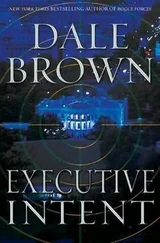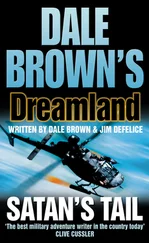Dale Brown - Sky Masters
Здесь есть возможность читать онлайн «Dale Brown - Sky Masters» весь текст электронной книги совершенно бесплатно (целиком полную версию без сокращений). В некоторых случаях можно слушать аудио, скачать через торрент в формате fb2 и присутствует краткое содержание. Жанр: Старинная литература, на английском языке. Описание произведения, (предисловие) а так же отзывы посетителей доступны на портале библиотеки ЛибКат.
- Название:Sky Masters
- Автор:
- Жанр:
- Год:неизвестен
- ISBN:нет данных
- Рейтинг книги:4 / 5. Голосов: 1
-
Избранное:Добавить в избранное
- Отзывы:
-
Ваша оценка:
- 80
- 1
- 2
- 3
- 4
- 5
Sky Masters: краткое содержание, описание и аннотация
Предлагаем к чтению аннотацию, описание, краткое содержание или предисловие (зависит от того, что написал сам автор книги «Sky Masters»). Если вы не нашли необходимую информацию о книге — напишите в комментариях, мы постараемся отыскать её.
Sky Masters — читать онлайн бесплатно полную книгу (весь текст) целиком
Ниже представлен текст книги, разбитый по страницам. Система сохранения места последней прочитанной страницы, позволяет с удобством читать онлайн бесплатно книгу «Sky Masters», без необходимости каждый раз заново искать на чём Вы остановились. Поставьте закладку, и сможете в любой момент перейти на страницу, на которой закончили чтение.
Интервал:
Закладка:
“There’s something that NIRTSat thing didn’t find, ” Blanchard snickered. “No matter how gee-whiz that satellite is, thirty.minute-old data is still thirty.minute-old data-and it’s garbage to us.” She turned to the radar operator and said, “I need a designation on that last contact, Radar. Get on it.”
“Signal two shows primary search radar on that surface contact, ” another operator called out. “Showing C-band, three-seventy PRF . . . calling it a Rice Screen air-search radar… “Radar four has an ISAR probable on that return, calling it a EF4-class destroyer… now picking up escorts, probably as many as four, within ten miles of EF4.” The ISAR, or Inverse Synthetic Aperture Radar, mounted in the two prominent fairings on the underside of the RC- 135’s fuselage, could paint a nearly three.dimensional picture of a ship and, by combining it with a computer data base of thousands of such radar images, could usually match the radar image with a ship in its computer memory. The larger the ship, the more accurate the match, and a destroyer-class vessel was a very large radar return. “Jeez, they got some pretty fancy firepower out here, ” Blanchard said. “A destroyer-class boat this far south.” She turned to the forward part of the aircraft. “Comm, code and send immediately to Andersen and Offutt on separate channels the position of that last contact. It’s the biggest gun the Chinese have this far south-I want to make sure everybody knows about it.” To the radar operator, she asked, “What’s our range to that EF4?”
“Range, four-seven nautical miles, ” the operator reported. “That’s close enough, ” Blanchard said to Fruntz. Fruntz was already leafing through pages of computerized text on the EF4 class of Chinese destroyers. “What’s the scouting report on those things?”
“Antiship and antisubmarine missile destroyers, ” Fruntz read. “About ten in the Chinese inventory, possibly with five more in ready reserve and five more overseas. Helicopter pad, big-time antiship launchers… holy shit, listen to this gun fit: four 130-millimeter dual purpose, eight 57-millimeter or 37millimeter antiaircraft guns, and four 25-millimeter antiaircraft guns. Rice Screen three-D long-range air-defense radar system-they call it a ‘mini-Aegis’ system-X-band ERF- 1 or X-band Rice Lamp fire-control radar for the guns. Some fitted with Phalanx self-defense guns, Ku-band radar.”
“Anything about antiair missiles?” “Yes . . . helicopter pad removed from some vessels and replaced with various stern-mounted missile systems, ‘ Fruntz replied. “Some fitted possibly with HQ-6 1 missiles, one twin mount, Fog Lamp H- or I-band fire control, max range of missile, six nautical miles-pretty small missile. Others possibly with French naval Crotale, max range eight nautical miles, X-band fire control. Some with HQ-9 1 French Masurca dualrail mount . . . shit, max range thirty nautical miles, 5-band pulse-Doppler tracker.”
“As far as we’re concerned, we’ll assume the worst case, Blanchard said. “Forty miles out from that EF4 is perfect for now. She paused for a moment, then added, “But that Rice Screen radar has me worried. That’s a no-shit early warning and fighter intercept radar system. Why have a boat with that kind of radar on board way out here unless “Flashlight, Flashlight, Flashlight, this is Basket, ” the radio report interrupted. Basket was the call sign of the E-3C Sentry Airborne Warning and Control System radar plane that had accompanied the RC- 135 on this mission. The AWACS plane could scan for hundreds of miles in all directions, locating aircraft at all altitudes and vector friendly fighters in to intercept. Emergency reports from an AWACS controller were always prefaced by calling out a sortie’s call sign three timesthe RC-135 was under attack. “Bandits at your twelve o’clock, Blue plus five-five, flight level zero-niner-zero, speed five hundred.” Range calls were always given in color codes in case the enemy fighters somehow were able to eavesdrop on the encrypted radio messages between aircraft; Blue meant fifty miles, Yellow meant twenty miles, Red meant zero miles, and Green meant subtract twenty miles. When a dogfight started, the controller would drop the color codes and issue warnings as fast as he could. All radar targets were being called “bandits, ” or hostile targets, in this area with Chinese troops nearby-of course, anytime a target began flying over five hundred knots, it was automatically considered an enemy fighter until proven otherwise. “Showing four targets now, Blue plus forty, speed passing five-zero-zero. Bullet flight, take spacing and stand by.” The AWACS plane not only issued warnings to Flashlight, the RC-135X plane, but also to Shamu Three-One, the KC-10 aerial refueling tanker that was supporting both the Navy and Air Force planes on this mission; two KA-6 Navy tankers to use as tactical spare refueling aircraft; and four Navy F-14A Tomcat fighters of VF-2 Bullets from the USS Ranger, which was steaming about one hundred miles east of Talaud Island just outside Indonesian waters. The Tomcats were armed with four medium-range Sparrow radar-guided missiles and four shorter-range Sidewinder heat-seeking missiles; since they were along only as escorts and, according to the Rules of Engagement, not authorized to attack from long range, none of the escorts carried the long-range AIM-54 Phoenix missile. Two of the F- 145, Bullet Four and Five, were with the RC135 acting as primary escorts, and the other two, Bullet Two and Three, were shuttling to the KC-10 tanker for refueling. Four more F-14 fighters were ready aboard Ranger, loaded with long-range Phoenix missiles as well as Sparrows and Sidewinders, to assist the Air Force recon planes and defend the battle group in case of trouble. … And it sounded like there was going to be trouble. With unknown aircraft heading their way, this was no place to be for one of the U.S. Air Force’s most sophisticated spy planes. The data was important, but not important enough to risk the manpower or the hardware. “Time to leave, Grasshopper. We’re calling it a night, ” Blanchard said. Being flippant about a possible fighter attack usually wasn’t her style, but she had found after pushing a crew for so long that the initial wave of excitement that hit a crewman who suddenly found himself or herself under attack sometimes caused costly mistakes; if you could relax a person during that initial fear-heavy period, he performed better. “Pilot, this is Recce One, execute egress now, ” Blanchard continued. “Crew, this is Recce One, terminate all emissions, secure your stations and queue your data for transmission. Report by station when complete.” She watched her status board light up with coded intelligence-data packets waiting for transmission; Blanchard and Fruntz could pick out the most important ones for immediate transmission, or send them in all in one quick burst, or send them one by one in ordered, errorchecked bundles. They preferred the last method until the bandits got closer and posed a more serious threat. Then Blanchard and Fruntz would use the faster 57, 000-kilobit-per second routines, shoveling the data out as fast as the RC-135’s computers could handle it. “Flashlight, turn left heading one-four-zero, ” the AWACS controller called out. “Manado airfield will be at your twelve o’clock position, two-five-zero miles.” Manado, a good-sized city on the Minahasa Peninsula of northern Indonesia, was the first emergency landing site; on a southeast heading, they were also flying away from the Philippines and toward their tanker and the USS Ranger, which was stationed in the northern Molucca Sea about five hundred miles farther east. “Flashlight copies, ” Blanchard’s pilot replied. He unconsciously pushed the throttles up to near military power, trying to claw every bit of distance between himself and the unknowns. It took only a few moments for Blanchard and Fruntz to finish their primary job-safely transmit the reams of radar and sensor data collected on this short trip. They began yet another error-checking routine after all the data was transmitted, where the receiving station on Guam would compute check sums from each line of data from their transmission, then compare the sums with Blanchard’s information. If it matched, Blanchard would erase the verified data and repeat the process with another data file. The verification process was the most timeconsumingsatellite transmissions even at the best of times were relatively slow and prone to interruptions but it was the safest way of ensuring that the information had been transmitted and received without errors before they would risk erasing it . . . and the information would all be erased before the enemy fighters got within striking distance. ABOARD THE NAVY F-14A TOMCAT FIGHTER BULLET FOUR This shit was happening too fast, Lieutenant Greg “Hitman” Povik thought. Night carrier operations were the absolute worst. Flying combat sorties was bad enough, but a night cat shot was sheer terror. Strapped into a sixty-thousand-pound machine, blasted out into the darkness from zero to one hundred and fifty knots in two seconds. Hard enough to flatten eyeballs. Hard enough that the brain thinks you’re in a steep nose-high climb, so your tendency is to push the nose down to the water-that will kill you in one second if you succumb to the feeling. You have no outside reference, no sign of up or down or sideways, no natural cues. The ultimate in sensory deprivation, even though you’re surrounded by instruments. So you keep full afterburner and back pressure on the stick until after the shot, after you’ve cleared the deck and established a positive rate of climb. Believe the instruments, because your brain will kill you if you let it. Positive rate of climb, positive altitude increase-gear up. Passing one-eighty, flaps and slats up. Passing two-fifty, wings moving back, turn out and listen up for your wingman. Everything is still dark, so you stay on the instruments. You hear radio calls coming from everywhere, from planes hundreds of miles away and from planes just a few miles away. Slowly, the real poop starts to filter in: wingman’s up, wingman’s got you locked on his radar so he can catch up without the carrier’s radar or the E-2 Hawkeye’s radar operators vectoring in. Vector to the tanker-an F-14 sucks a lot of gas for takeoff, and the good guys are three hundred miles and a quarter-tank of gas away still. Check the cockpit, get a check from your RIO-Radar Intercept Officer, Lieutenant JG Bob “Bear” Blevin-check oxygen and pressurization, check weapons, check everything. Soon the sounds of the hostile area filtered in. An Air Force reconnaissance plane is less than a hundred miles from the Philippines, within pissing distance of Chinese warships. Intelligence says Chinese patrol planes, with fighter escorts, might be up. They say the Chinese ships might have antiair missiles and guns and might just shoot first and ask questions later. Great. With nothing but black surrounding you, you feel more alone than you’ve ever felt before-there’s nothing but miles of ocean between you and dry land or deck. Things happen too quickly, even though the Air Force plane is hundreds of miles away. Blevin makes radio contact with the KA-6 tanker, and they maneuver to intercept. The small KA-6 will transfer only a few thousand pounds of fuel, but it’s better to fly overwater with full tanks as much as possible in case of trouble. Night aerial refueling ranks right up there with night catapult shots in the anxiety department. Povik has to drive up behind the KA-6 tanker, find a tiny four-foot-diameter lighted basket, and stick a three-inch nozzle inside it by maneuvering his forty-five-ton air machine around it. Meanwhile, the KA-6 is turning in a racetrack pattern so it won’t fly too far from the carrier, which makes the hookup even more difficult. With gentle coaching from Blevin, Povik made the hookup on the second try, and he managed to stay hooked up and made the transfer all at once. He maintained visual contact on the tanker while his wingman made contact and got his gas, and then they got a vector from their E-2C Hawkeye radar plane controller to the west. No sooner had they finished refueling, and they were transferred to the Air Force E-3 AWACS radar plane’s controller, who was providing air coverage for all the planes operating near the Philippines. The Navy guys had trained a few times with Air Force controllers, but they still used different terminology and never seemed to shut u~they seemed determined to read off every number on their radar screens and let the fighter crews work their own navigation solutions. But after filtering out the chatter-obviously those AWACS guys were nervous too-Povik and his wingman in Bullet Five were vectored in to visual range of an Air Force RC- 135 reconnaissance plane. It looked like a KC-135 tanker, but without the refueling boom and with lots of odd bumps and antennas all over it. All that, from cat shot to now, took less than an hour. Now they had unidentified aircraft bearing down on them. Povik didn’t even have time to get himself comfortably situated, get his heads-up display set up just right, and tighten his strapsthe fight was starting right now. “Bullet flight, take spacing and check your lights, ” Povik radioed to his wingman. He turned to check that his wingman was configured properly-no missing missiles, lights off, nothing funny-looking out there-before he disappeared into the darkness. Now they were relying on the Air Force AWACS controller to keep them separated, yet working as a team as they prosecuted these bandits. “Bullet flight, this is Basket. Four bandits twelve o’clock, Blue plus twenty, flight lev-er, angels fifteen. Possible second flight of two bandits, angels ten.” The AWACS controller was trying hard to use Navy terminology for this intercept, such as “angels” for “thousands of feet” or “port” and “starboard” for “left” and “right, ” but the more excited he got the more he was stumbling over his tongue. ‘Starboard ten for intercept.”
Читать дальшеИнтервал:
Закладка:
Похожие книги на «Sky Masters»
Представляем Вашему вниманию похожие книги на «Sky Masters» списком для выбора. Мы отобрали схожую по названию и смыслу литературу в надежде предоставить читателям больше вариантов отыскать новые, интересные, ещё непрочитанные произведения.
Обсуждение, отзывы о книге «Sky Masters» и просто собственные мнения читателей. Оставьте ваши комментарии, напишите, что Вы думаете о произведении, его смысле или главных героях. Укажите что конкретно понравилось, а что нет, и почему Вы так считаете.












